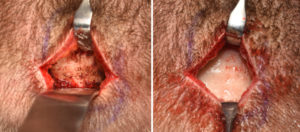One not uncommon form of skull reduction surgery is that of the occipital knob. This is a region of the central lower occipital skull that everyone has…but most of the time it is a small barely raised bone area that is not seen etxternally and barely palpable. But in some people. almost exclusively men, this small section of bone becomes enlarged and sticks out like a ‘knob’ on the back of the head. The reasons are not clear as to why this bony overgrowth occurs it is likely related to musculoskeletal dynamics.
Besides occurring in men they are also the patient in which it is most likely to be seen with close cropped haircuts or a shaved scalp. This visibility is also an important aesthetic issue when it comes to occipital knob reduction surgery. While an incision and resultant scar is a necessary part of the surgery, the length of the incision and the management of the surrounding hair follicles are key in not creating a secondary aesthetic issue (visible scar) in trying to solve the primary aesthetic concern.

In closure of the small scalp incision sutures are not placed at the dermal level to avoid trapping and strangulating any hair bulbs. Also small resorbabke skin sutures are placed that are superficial and stay above the level of the hair bulbs. With this conscientious approach to scalp incision management, such small scalp scars from occipital knob reduction can heal in an imperceptible manner.
Dr. Barry Eppley
Indianapolis, Indiana




